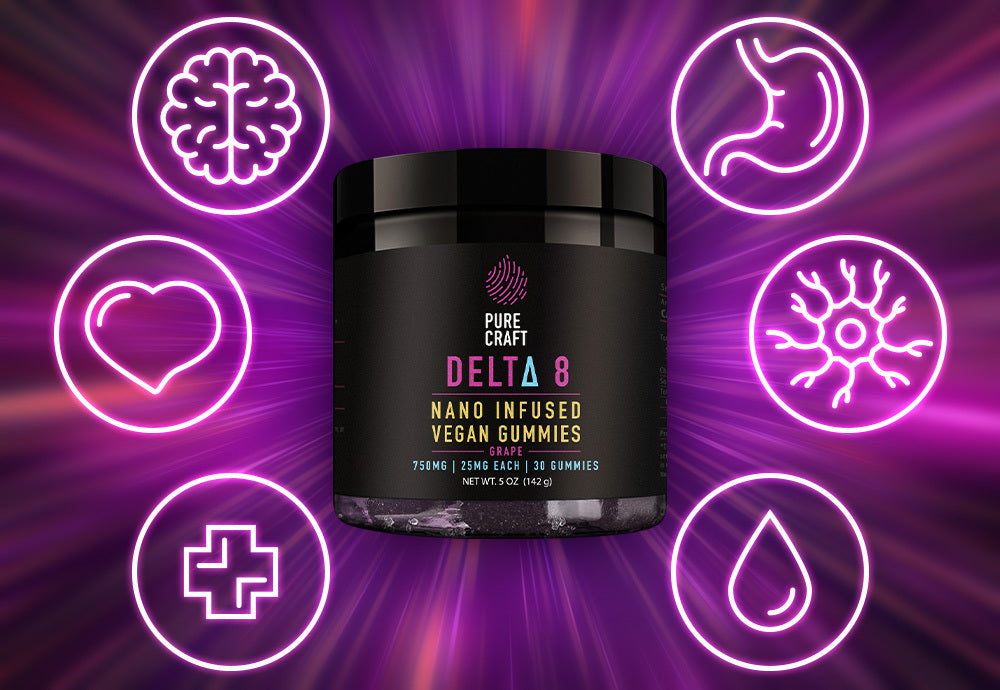Your Cart is Empty
FREE SHIPPING ON ORDERS $70+ | SATISFACTION GUARANTEED
As you may recall from our prior post Anatomy Of CBD — An Inside & Out Look At Hemp-Derived Cannabidiol, hemp has female, male, and hermaphroditic varieties. We thought this was a fascinating factoid and would makes for a fun topic to elaborate on. In this post we’ll take a slightly deeper look at the gender characteristics of each of these plant sexes.
Cool your jets, though, Romeo. We're talking biology here — plant biology. It'll be super interesting — maybe a little racy? — but nothing that’ll require a signed permission slip beforehand or a cold shower afterward.
Peeking under the leave, petals, or fronds of a plant to see what kind of plumbing it’s got going on probably isn’t the first thing that comes to mind when you’re looking at or selecting it. Likely, most people don’t think of plants a being sexual in any way, shape, or form.
But they are. As with other living things, they need to reproduce to continue their species.
With this idea under your pith helmet or sun bonnet (and osmosing into your beautiful brain), it doesn’t seem so wacko that plants can be sexed.
Plants with explicitly distinct reproductive bits on the same plant are called monecious. Dioecious plants have either male or female reproductive elements — not both — on a single plant. We know — biology terminology can be as fun as falling into a patch of stinging nettles….(1)
Plant species run the range of sexual characteristics and functions. Meaning you can have:
Not only can plants have different/changing sexual organs, but they can also have a whole spectrum of sexual/reproductive behavior.
According to one source, botanists have come up with a slew of terms to characterize plant sexuality. These included: unisexual, bisexual, asexual, self-fertile, self-sterile, and polygamous.”(2) You may also hear the terms selfers (self-pollinators) and outcrossers (cross-pollinators).(3) Yowza!
Basically, over the millennia, plants have devised a bushel of ways to reproduce. Some of these methods involve a magical combustion of a “sperm” and an “egg.” Other methods are more of a “divide and conquer” approach — like bulbs and tubers (e.g., garlic and yams) or plant cuttings.(4)
Plant procreation may not be the hottest or most romantic thing — but it keeps our planet planty.

Hemp, like the rest of its flora kin, needs to reproduce. As such, nature has provided it with the anatomical bits and bobbles to do so.
So, yah, this is the section in which we tell you about what the male and female hemp sexual structures look like and what they do.
Sex typing hemp plants is a pretty straightforward affair. Hemp is usually dioecious, so a given plant will have either male or female sex organs.(5)
There are three common ways to determine the sex identity of hemp plants:
The method used is usually determined by a grower’s budget, timeframe, and process.(6) For simplicity, we’ll focus on the age-old approach of physically observing hemp plants.
During peak growing periods — when hemp plants have roughly 12-14 hours of daylight — cultivators can check their plants to see what reproductive structures have developed.(7) For outdoor crops in North America, this coincides with summer months. For indoor farms with controlled conditions — it’s a matter of keeping track of the passage of time since planting.
Identifying boy plants can be as simple as giving it a visual inspection. Compared to female plants, male plants are taller, have thicker, woodier stalks, and less foliage.
At about 3-4 weeks old, they will also develop little pre-flower bobbles or clusters where the leaves meet the stalks. These football-shaped sacs (stamen) are filled with pollen. Left to its own devices, the stamen will eventually open and release the pollen.(8)
Male plants sexually mature sooner than females. So, if you’re examining your plants regularly — you’ll see the boys’ reproductive organs first.
Similarly, a skillful scan of a plant can reveal if it’s female. Girl plants are shorter and bushier than their male counterparts. They also tend to have a slenderer stalk and more leaves.
The reproductive organs of the female (pistils) begin showing at about 6 weeks post-germination (sprouting into a seedling). They start out as tiny, white, V-shaped hairs (stigmas) situated at the junctions of the leaves and stalk. As these pre-flowers progress, several may grow together and form clumps of buds (bract-covered ovules) with stigmas shooting out of them.(9)
Our beloved cannabinoids primarily accumulated in the buds.(10)
If fertilized, the ovules become seeds (achenes).
Hermaphroditic hemp plants — often called hermies — have the reproductive organs of both sexes. This means they have those pollen-producing sacs/flowers and hairy, egg-filled buds.
Because it also means hermies can fertilize themselves, these individuals are treated as if they were male-only plants. For the same reasons male plants can be detrimental to the hemp crop and its cannabinoid levels.
There is a kind of hermaphroditism called sequential hermaphroditism. Hemp plants with this form of hermaphroditism can adaptively choose their sex after fertilization. So, they might oscillate between being female and male throughout their lives. Neat!
Environmental sex determination and hermaphroditism are not the same thing. ESD is when a plant switches sex based on non-genetic factors like:
This conversion from male to female or female to male happens sometime after the plant is fertilized. ESD can only occur once — after a hemp plant has gone from one sex to another, it can’t change again.
Sometimes, producers don’t want to leave things up to nature. They literally take things into their own hands. We won’t go into detail, but female hemp can be masculinized and male hemp can be feminized. (11) Plants are “converted” from one sex to the other for various reasons related to CBD yield to controlled and selective breeding.
So, which is better? Male or female hemp? That’s an unfair question — Mama Earth loves all her hemp babies equally!
But seriously, does it make a difference if a hemp plant is one sex or another? YES! (Finally, a question with definitive answers!)
As a hemp farmer or CBD producer, having the right mix of female and male hemp plants is critical.
To help prevent issues, many growers carefully sex their plants. Then, the male plants must be destroyed (or relocate far away from female plants).(12) Otherwise, there’s a risk of the males fertilizing the females.
A fertilized lady hemp will then divert its internal resources to producing seeds instead of making CBD. This can negatively impact the crop’s overall yield of CBD. In turn, this can affect the supply chain and costs for CBD products.
We promise growers aren’t being sexist! They’re acting based on biologic and commercial facts. Female hemp plants have much higher concentrations of CBD than male and hermaphroditic plants.(13) This makes them more cost-efficient and productive plants for CBD producers.
While you may think this makes them the more attractive (lucrative) sex to have around, just remember that you need male hemp plants to fertilize female plants so you can have next-generation hemp babies. It’s the only way to generate seed for new plants.
As a consumer, once the CBD oil product is in your hands — it doesn’t matter what sex the hemp plant it came from was. By the time the cannabidiol extract is in your CBD gummies or CBD tincture it’s all the same.
Plants have sexual identities and behaviors. This enables them to reproduce and continue their species.
The hemp plant is no different. Typically, hemp plants are male, female, or hermaphroditic. Knowing the sex of the plant is important to growers because female hemp produces much more CBD than their other-sexed counterparts.
As a CBD user, though, a hemp plant’s sex doesn’t matter. The CBD’s the same regardless of whether it came from a male, female, or hermie plant.
References

The cannabis compound CBD has been popping up in Parkinson’s disease (PD) therapy and prevention conversations, propelled by success stories from p...
Read More
CBD is one of the most popular supplements on the market today. But you're a savvy consumer. You know just because something is popular doesn’t mea...
Read More
You know delta-8 as "weed-lite" or the "chillest of the cannabinoids." But what about all the potential health benefits of this unique compound? Wh...
Read More